Wounaan Baskets
from the Darien Rainforest in Panama
Presented by Basket & Art
History of Wounaan Baskets
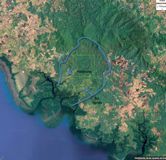
All the brown and tan areas around the green are areas of total deforestation
Wounaan baskets are made by the Wounaan and Embera tribes from the Darien Rainforest in Panama.All baskets are woven by hand with a sewing needle and chunga palm threads.Read Weaving Process and Techniques.
These fine baskets did not happen naturally.It is another story of indigenous tribes who are struggling to survive in this modern world.
Problems Arrived Illegal Logging
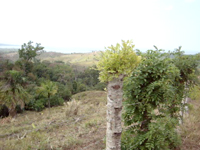
Barbed wire cattle fences
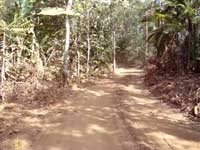
Carved dirt road for illegal logging
Fortunately or unfortunately, the tribes inhabited a rainforest full of pristine rosewood which was desirable material for furniture.Illegal logging has been one of the problems they faced.
Cattle Ranching
Besides illegal logging, it seems the word was out that the rainforest was up for grabs. People just went into the rainforest and non-sustainably cleared it for cattle ranching.Rivers were contaminated.Wildlife was displaced.Some wildlife species did not know how to traverse the newly cleared areas to look for food.
Basic Basketry
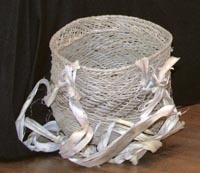
Utilitarian basket
The Wounaan and the Embera could not survive just by hunting and gathering anymore.A little farming helped.Most people preferred living in the rainforest to moving to the city.
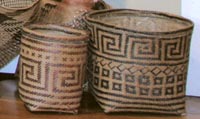
Stylized utilitarian baskets
The Wounaan and Embera, just like other indigenous tribes, knew how to weave utilitarian baskets to use for their daily lives.They were hunter-gatherers who had been living in the rainforest before the countries of Panama and Colombia were established. Life was simple then.
The Wounaan and Embera started to make simple baskets and masks to sell to tourists traveling to Panama.
How It Began
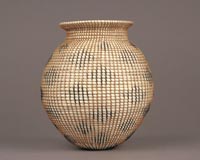
Primitive Wounaan Basket
Around 1970, some Panama City gallery owners and Peace Corps activists suggested to the weavers that they create finer baskets using more colors and patterns.These tribes seemed to have a natural skill in basket weaving and an artistic mind to put the 2-dimensional pattern into 3-dimensional form. They are intuitively able to weave these intricate patterns without counting stitches.
Their Pride
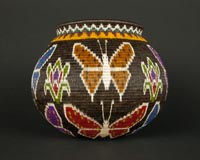
304 stitches per sq. inch
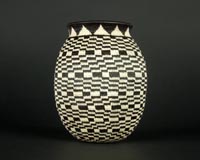
708 stitches per sq. inch
From stylized utilitarian to primitive, and now to the finest baskets you ever found, these weavers worked very hard to make their stitches smaller.They pushed to split the chunga fiber as finely as they could.They realized if they twisted the fiber, it would be stronger.
These tribes are extremely proud.Their motivation to be the best weavers in the world certainly was one factor which contributed to their excellent basket weaving techniques.
Stitch Count
Earlier woven baskets had a count of approximately 10 stitches per square inch.Now the average is about 300 stitches, and some weavers have pushed it to 800+ stitches per square inch.